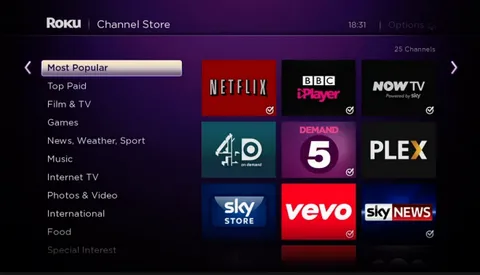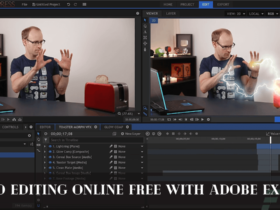With the streaming industry booming, developing an app for Roku can be a strategic move for businesses and content creators. Roku offers a popular, user-friendly streaming platform that allows developers to reach millions of viewers globally. Known for its ease of use and accessibility, Roku makes it possible to provide content through personalized, monetizable channels. In this guide, we’ll cover the essentials of Roku application development, including the tools required, how to get started, and tips for creating a successful app.
Why Develop an App for Roku?
Roku is a highly popular streaming device that enables users to access an expansive range of content. Developing an app for Roku has multiple benefits. For starters, Roku’s extensive user base means you can reach a diverse and global audience. Furthermore, Roku’s platform supports a variety of monetization models, such as ad-supported content, subscriptions, and in-app purchases, giving developers and businesses multiple ways to generate revenue. Finally, Roku offers developer-friendly tools and comprehensive documentation, which simplify the development process and allow for a high level of customization through its unique programming language and interface framework.
Understanding BrightScript and SceneGraph
Roku app development differs from traditional mobile app development due to its use of BrightScript, Roku’s proprietary scripting language, and SceneGraph, its user interface framework. BrightScript is a versatile language similar to Python or JavaScript, which eases the learning curve for most developers. SceneGraph, on the other hand, is Roku’s UI framework that allows developers to design custom user interfaces with XML-based components, creating layouts, animations, and interactions. Together, BrightScript and SceneGraph form the backbone of Roku development, and understanding these tools is essential for creating a visually engaging and functional app.
Getting Started with a Roku Developer Account
Before diving into coding, developers need to set up a Roku Developer Account. This account grants access to Roku’s Software Development Kit (SDK), essential tools, and documentation. Additionally, you’ll register your Roku device under this account for development purposes, allowing you to test your app on an actual Roku device. Setting up a developer account is simple and ensures that you have all the resources and permissions needed to develop and eventually publish your Roku application.
Configuring Your Development Environment
Setting up a development environment is one of the first technical steps in Roku app development. Roku supports multiple Integrated Development Environments (IDEs) and even provides plugins for popular editors like Visual Studio Code. For ease of testing and debugging, you can install the Roku Developer Tools, including the Roku Dev Tools extension, which streamlines sideloading applications and accessing the Roku Debugger and Profiler. Configuring a seamless development environment not only improves your productivity but also ensures that you can address issues as they arise during the coding process.
Building a Strong Foundation with BrightScript and SceneGraph

Developing a Roku application requires familiarity with BrightScript and SceneGraph. BrightScript handles the logic behind your app, similar to how JavaScript or Python would in web development. SceneGraph, meanwhile, enables you to create and manage the UI, allowing for a customizable viewing experience that can meet various design needs. Roku’s detailed documentation provides a solid foundation in both BrightScript and SceneGraph, with tutorials and examples to help you learn these components. Spending time mastering BrightScript and SceneGraph will prepare you to build an efficient and user-friendly app.
Designing Your Roku Channel
Once you’re comfortable with the basics of BrightScript and SceneGraph, you can begin creating your Roku channel. This process involves setting up the layout, navigation, media players, and overall user experience. SceneGraph’s XML-based interface elements are instrumental in designing an intuitive navigation structure and engaging UI. By leveraging SceneGraph’s animations, lists, and components, you can create a unique viewing experience that aligns with your brand and makes it easy for users to access and enjoy your content.
Testing Your Application
Testing is a crucial phase in Roku application development. Roku’s Developer Tools provide essential resources for debugging, performance testing, and profiling, which help ensure that your app runs smoothly. In Developer Mode, you can sideload your application onto a Roku device to test its functionality, user interface, and playback features in a real-world environment. By taking time to thoroughly test your app, you can identify and resolve issues before submitting it for publication, resulting in a polished final product.
Publishing Your Roku Channel

After building and testing your application, the next step is publishing your Roku channel. To submit your app to the Roku Channel Store, you’ll need to follow Roku’s publishing guidelines, which cover content requirements, metadata, and technical specifications. Ensuring compliance with these guidelines not only expedites the approval process but also enhances the overall quality and user experience of your app. Once approved, your app will be available to millions of Roku users, opening the door to a broad audience.
Key Features to Enhance User Experience
Roku offers flexibility in terms of features that can improve user engagement. For instance, adding user authentication is important if your app offers personalized content or requires a subscription. Incorporating seamless media playback controls, like play, pause, and rewind, is also essential for a smooth streaming experience. Furthermore, including interactive features such as recommended content, playlists, or a recently watched section can significantly enhance user experience. Thoughtful inclusion of these features can help your app stand out and encourage user retention.
Conclusion
Developing a Roku application offers an exciting opportunity to connect with a vast audience and build a revenue-generating channel. By setting up a Roku Developer Account, configuring your development environment, mastering BrightScript and SceneGraph, and thoroughly testing your app, you can create an engaging and successful Roku channel. With its unique development tools and growing user base, Roku is a powerful platform for any developer looking to enter the world of streaming. Whether you’re building a content channel, a niche streaming app, or an interactive experience, Roku application development offers endless possibilities.










Leave a Reply